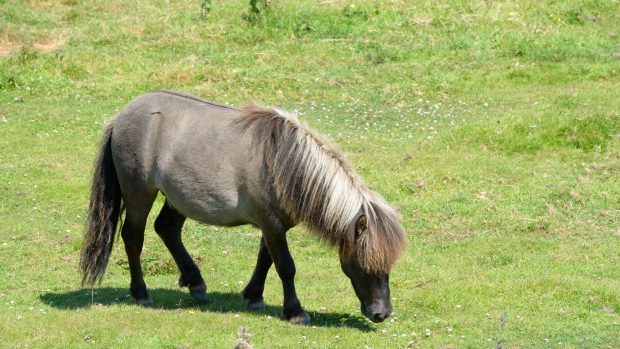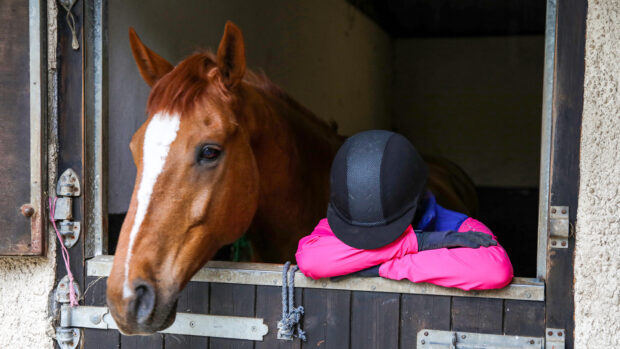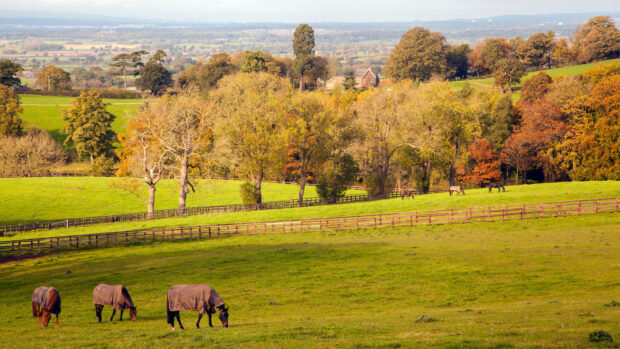Laminitis is a common, painful condition which manifests itself in one or more of the horse’s hooves. It is a multifactorial condition, which means it can be difficult to identify the cause, but it frequently arises as the result of a metabolic upset.
Laminitis is regularly seen in native ponies, particularly those that are overweight, while horses suffering from underlying issues like Cushing’s disease or Equine Metabolic Syndrome may also be at greater risk of the disease.
“The modern equine lifestyle of cosy stables, rugs and nice full haynets is often where the problem of laminitis stems from. We should be feeding as naturally as possible, which means feeding a high fibre, high forage diet with no starchy cereals, such as may be found in concentrates,” says Kate Hore, head nutritionist at NAF.
If a horse has been diagnosed with laminitis, it’s important to consider their case on an individual basis. Generally speaking however, they should be fed little and often. Their diet should contain fibre with essential vitamins and minerals, while sugar and starch levels should be kept low. Depending on the individual horse or pony and their weight and health status, grass turnout may need to be limited or avoided altogether. Some feeds are formulated specifically for horses prone to laminitis.
“Ensure you maintain a good vitamin, mineral and quality protein intake to support muscle, hoof health, coat condition and internal nutrient reserves and healthy fibre levels to support gut function,” says Katie Grimwood, equine nutritionist at Baileys Horse Feeds.
Soaking hay will help to reduce the sugar content and calorie intake, while clean mature hay is preferable to fresh green hay. Feeding good quality oat or barley straw as part of a horse’s forage consumption is also an option as it’s low in calories yet high in fibre.
“For an overweight pony in light work, ideally we want to source low water soluble carbohydrate hay, or use soaked hay to reduce sugars, and limit access to fresh grazing. For an insulin resistant eventer, we might be looking at alfalfa chaffs and ad lib forage, with additional oil, to provide all the energy they need,” explains Kate.
The basic feeding principle with a laminitis prone animal is really the same as with any horse, and that is ‘feed to work done’. Many laminitics are notoriously good-doers, and love their food. Research shows that ponies on restricted turnout can adapt both bite rate and the amount taken in each bite, so that they can essentially eat as much in three hours as they would naturally do in 12 hours.
“Think of ways that you can maximise the time turned out, but still control access to grazing. It’s best to avoid a small cornered off area as that encourages them to stand and eat, whereas natural movement is what we want. Track systems can be really useful, if practical, alternatively look at using a grazing muzzle or strip grazing to limit intake whilst encouraging natural movement,” continues Kate.
Pelleted forage balancers are an ideal source of food for laminitis-prone horses as they provide key vitamins, minerals and quality protein appropriate for the horse’s level of work while keeping calorie, starch and sugar intakes low. Remember horses should never be starved as this risks further metabolic complications.
“For horses that need additional calories for weight gain, high calorie fibre sources can be added along with the balancer, such as unmolassed alfalfa chaffs with added oil, or soaked beet products. High oil supplements are also available,” says Katie.
If your horse is prone to laminitis it’s important to regularly body condition score them so you can monitor their weight. Ask for advice from your vet or nutritionist if you’re unsure how to do it and keep a record so you can track the results. Taking photos can also be useful.
“One of the key messages is working towards stopping laminitis happening rather than dealing with it. Be on high alert with your horse, particularly if he’s prone to laminitis, and don’t allow him to become overweight. Be constantly aware of what and how much you’re feeding him and his exercise level. Ask whether he needs to be rugged. Be aware 365 days a year,” concludes Lizzie Drury, senior nutritionist at Saracen Horse Feeds.
You might also be interested in:

23 feeds suitable for horses prone to laminitis

12 supplements to keep your horse on his feet

Expert advice for feeding a horse to avoid gastric ulcers

Subscribe to Horse & Hound magazine today – and enjoy unlimited website access all year round
Horse & Hound magazine, out every Thursday, is packed with all the latest news and reports, as well as interviews, specials, nostalgia, vet and training advice. Find how you can enjoy the magazine delivered to your door every week, plus options to upgrade your subscription to access our online service that brings you breaking news and reports as well as other benefits.




